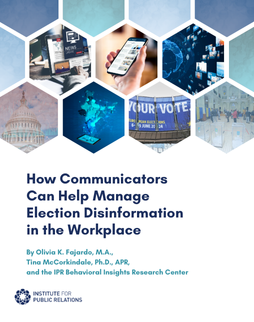
Recent studies note that communications professionals have one of the most stressful jobs. With limited resources, crises and issues to manage and budgets that often pale in comparison to the ad spend, it’s not easy. And taking time to measure our work and results is often not the top priority or properly resourced. But that’s changing.
As the lines blur between marketing and communications, and two-way engagement is more critical than ever, public relations – or public engagement in today’s terms – is something every brand and business needs. And despite the job not getting any easier, it’s more important than ever – especially in the “reputation economy” we’re living in. Making our work matter and knowing how it’s contributing to the bottom line is essential.
This WAS Measurement
For years public relations professionals have measured success with inflated impression numbers or a front page article in a top publication once a huge campaign or announcement is over. It’s evolved to measuring followers or likes. But what does this all mean? How does it matter? Is the end goal to drive awareness? Or is the end goal to drive sales or to change perceptions? Is the goal to drive advocacy and purchase intent for a new product? How do impressions, media coverage or social chatter help us understand if we’re actually meeting those goals?
This IS Measurement
It’s time as an industry we measure what matters. In doing this, it’s equally important to understand the end goals from the beginning and then build a strategy to meet them. Who is the target audience? What are the best vehicles to reach that audience, vs. the most visible outlet? Sometimes the biggest outlet or circulation numbers don’t matter if the target audience doesn’t find it to be a trusted source.
Keep it Simple
When impressions become like wallpaper and blend in with no context, they’re probably becoming wallpaper to everyone else as well. So how can we tell a simple story in connecting how the stimulus we are putting out there (volume of coverage, tone, asset use, message penetration, etc.) is leading to our desired response and outcomes (awareness, purchase intent, advocacy)? If we can’t tell this story, it’s time to adjust the measurement methodology. Make it matter.
Measurement Musts
So what are the measurement musts to tell this simple story and make it matter? Here are a few guiding principles to consider:
- Before you do anything, define what success looks like. What is most important? Who are you trying to reach?
- Then set measurable targets that prove whether or not you achieve your goals (and prove if your strategy is working).
- Test messaging and your planned approach with consumers in advance of the campaign and adjust plans accordingly.
- Establish a media analysis framework and consistent measurement template
- Measure holistically, year over year – not just campaign to campaign or initiative to initiative. How are you growing advocacy year over year?
- Refer to resources and adopt Industry Standards . Here are some great resources to check out: Dictionary for PR Research and Measurement (Institute for Public Relations) and #SMMStandards
Happy Measurement Week and remember to make it matter!
Molly McKenna Jandrain is the PR Director of McDonald’s USA.





